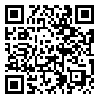Volume 9, Issue 4 (11-2010)
JRUMS 2010, 9(4): 305-314 |
Back to browse issues page
Download citation:
BibTeX | RIS | EndNote | Medlars | ProCite | Reference Manager | RefWorks
Send citation to:



BibTeX | RIS | EndNote | Medlars | ProCite | Reference Manager | RefWorks
Send citation to:
The Effects of CCK-8 and CCK2 Receptor Antagonists on Naloxone-induced Jumping in Morphine Dependent Mice. JRUMS 2010; 9 (4) :305-314
URL: http://journal.rums.ac.ir/article-1-5336-en.html
URL: http://journal.rums.ac.ir/article-1-5336-en.html
Abstract: (2791 Views)
Background and Objectives: Opioids are an important group of analgesics that are used extensively to control sever pains. Physical dependence to these drugs is a major problem. There are a few studies regarding the involvement of cholecyctokinin (CCK) in the withdrawal syndromes of opioids. In the present study, the effects of CCK agonist and antagonist on the number of jumping of morphine dependent mice were evaluated.
Materials and Methods: In this experimental study, the effects of CCK-8 and LY225910 (selective CCK2 receptor antagonist) on jumpings of mice after morphine dependence were evaluated. Mice were injected with morphine three times a day (50, 50 and 75 mg/kg) for three days; at the forth day they received 50 mg/kg morphine. Injection of naloxone (5 mg/kg) induced withdrawal signs such as jumping. The experimental groups received different doses of CCK-8 (0.1, 0.3 and 0.6 mg/kg) and LY225910 (0.01, 0.5 and 1 mg/kg) with each injection of morphine.
Results: Injection of CCK-8 significantly decreased the naloxone-induced jumpings, while LY225910 did not have any significant effects on these jumpings.
Conclusions: Based on the results of the present study, activation of CCK1 receptors probably is involved in morphine dependence. The results also confirm that injection of CCK but not CCK2 selective antagonist probably decreases the jumpings of mice following withdrawal syndrome of morphine.
Key words: Cholecyctokinin, Morphine, Dependence, Pure agonist, Competitive antagonist, Jumpings
Funding: This research was funded by Rafsanjan University of Medical Sciences.
Conflict of interest: None declared.
Ethical approval: The Ethics committee of Rafsanjan University of Medical Sciences approved the study.
Materials and Methods: In this experimental study, the effects of CCK-8 and LY225910 (selective CCK2 receptor antagonist) on jumpings of mice after morphine dependence were evaluated. Mice were injected with morphine three times a day (50, 50 and 75 mg/kg) for three days; at the forth day they received 50 mg/kg morphine. Injection of naloxone (5 mg/kg) induced withdrawal signs such as jumping. The experimental groups received different doses of CCK-8 (0.1, 0.3 and 0.6 mg/kg) and LY225910 (0.01, 0.5 and 1 mg/kg) with each injection of morphine.
Results: Injection of CCK-8 significantly decreased the naloxone-induced jumpings, while LY225910 did not have any significant effects on these jumpings.
Conclusions: Based on the results of the present study, activation of CCK1 receptors probably is involved in morphine dependence. The results also confirm that injection of CCK but not CCK2 selective antagonist probably decreases the jumpings of mice following withdrawal syndrome of morphine.
Key words: Cholecyctokinin, Morphine, Dependence, Pure agonist, Competitive antagonist, Jumpings
Funding: This research was funded by Rafsanjan University of Medical Sciences.
Conflict of interest: None declared.
Ethical approval: The Ethics committee of Rafsanjan University of Medical Sciences approved the study.
Type of Study: Research |
Subject:
Physiology
Received: 2020/05/12 | Accepted: 2020/05/12 | Published: 2020/05/12
Received: 2020/05/12 | Accepted: 2020/05/12 | Published: 2020/05/12
| Rights and permissions | |
 |
This work is licensed under a Creative Commons Attribution-NonCommercial 4.0 International License. |




